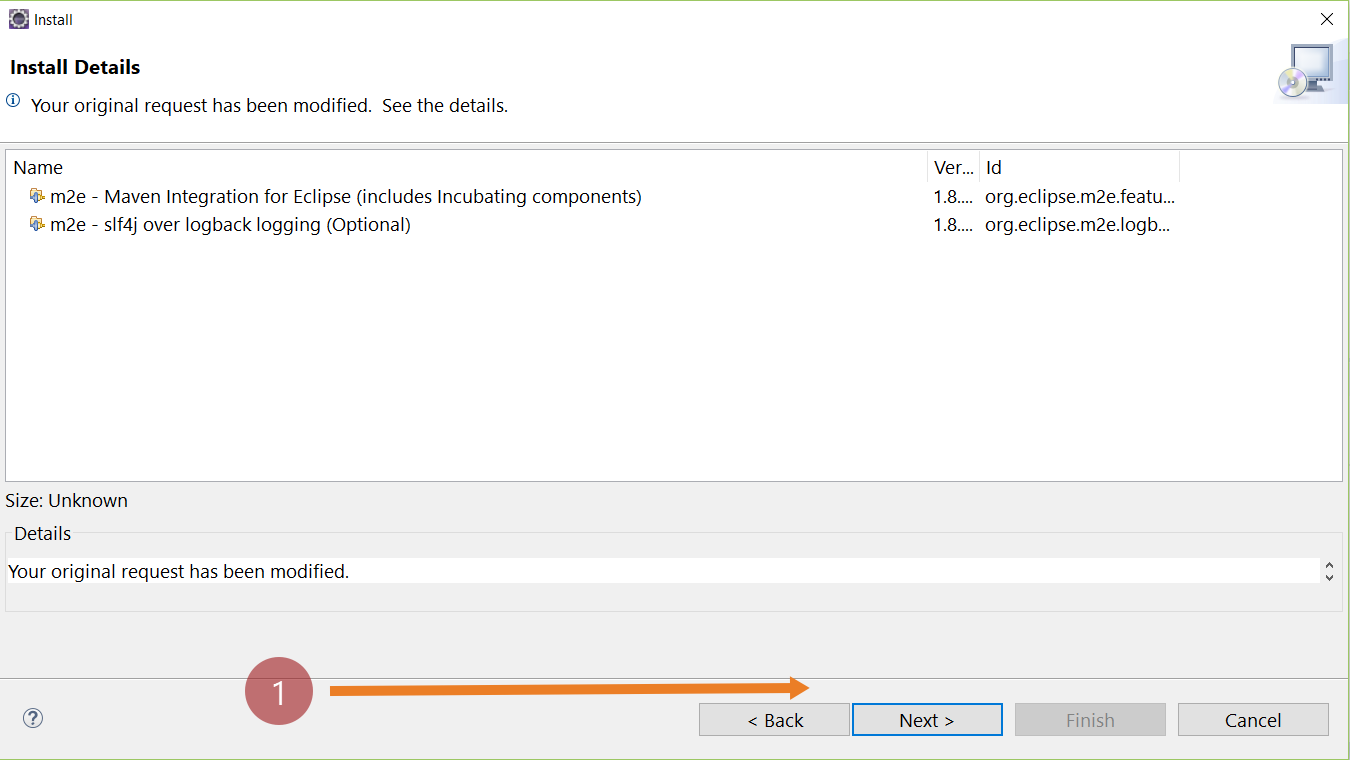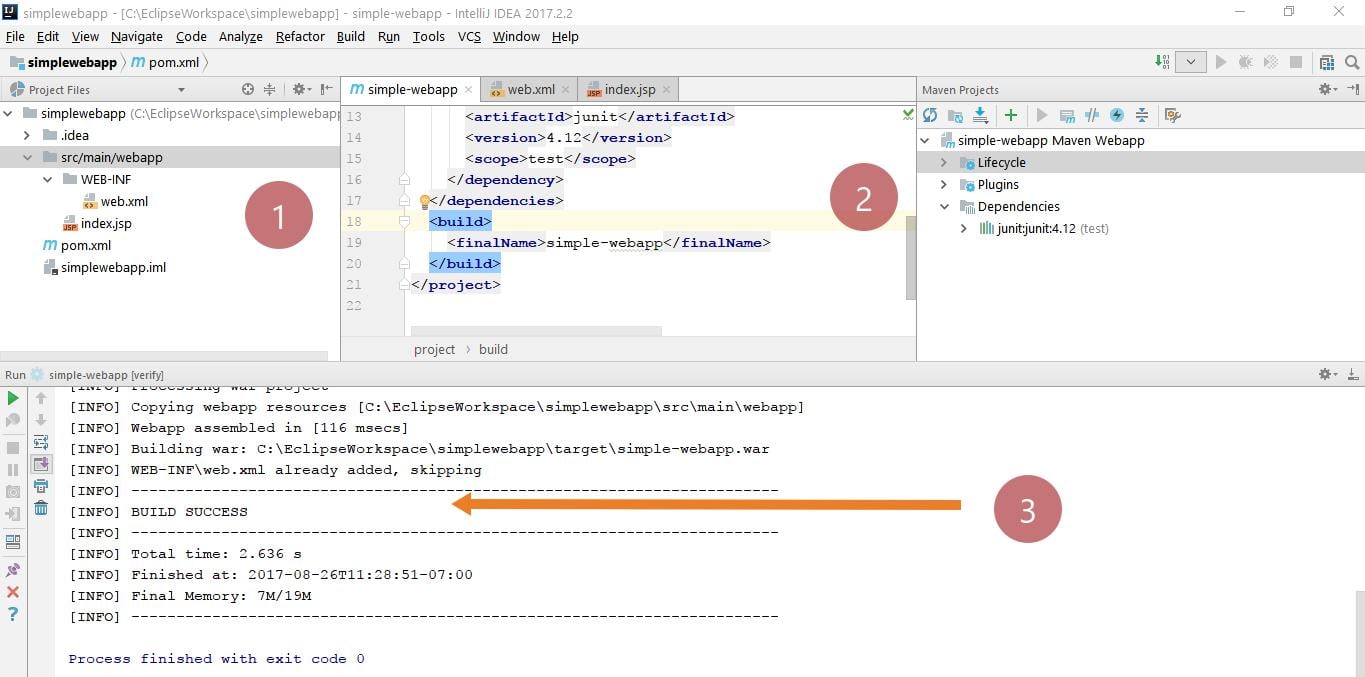Create Maven Project from Archetype in NetBeans
Introduction
In this tutorial, let’s create a Maven project from Archetype from within the NetBeans IDE. Maven tool provides project templates that can be created with Maven’s Archetype Plugin.
Project from Archetype
Launch NetBeans IDE.
Click on File >> New Project….
On the next screen, select the option Maven category and the option Project from Archetype from projects.

Click on the Next > button.
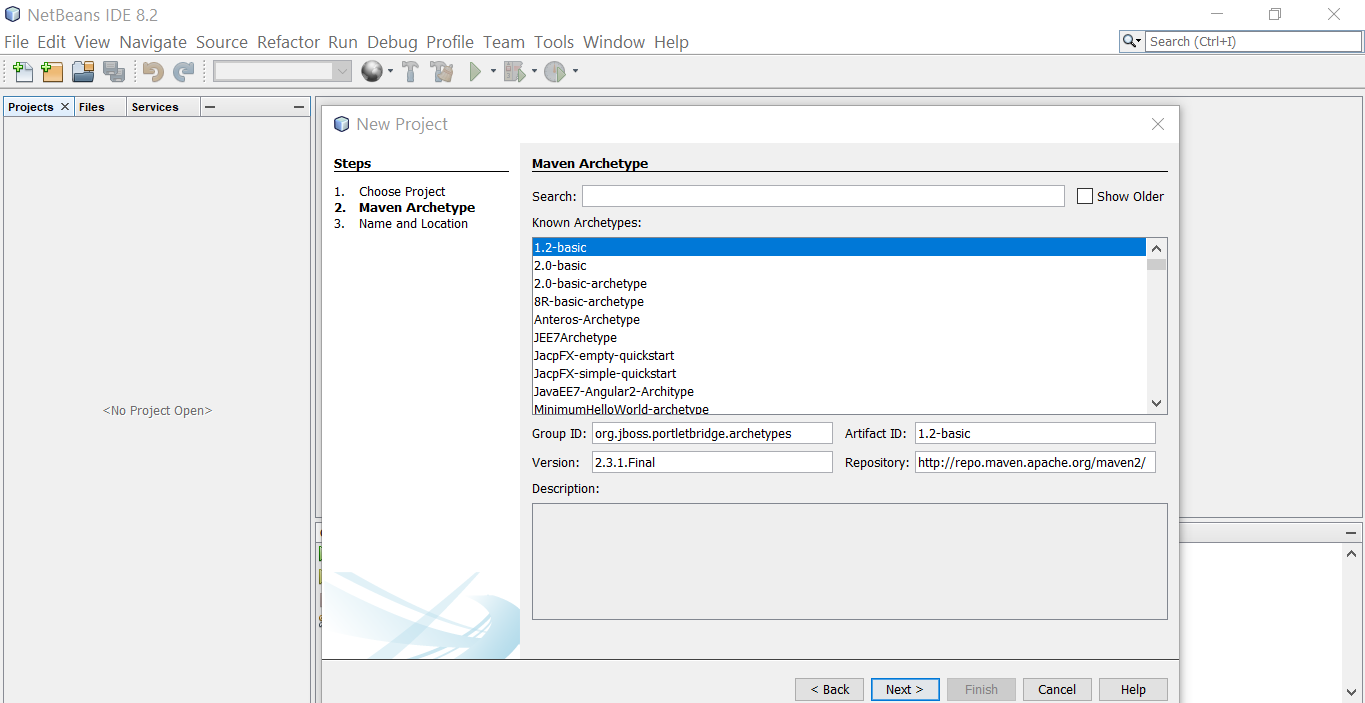
You can either select an archetype from the known archetypes or search for one in the search field.
Let’s create a simple maven-archetype-quickstart project. Feel free to create other types of projects depending on the project you are going to work on. For instance, you may want to create an automation project using the TestNG project. You can search for testng archetype.

Once you have chosen the project type, click on the Next > button.
In the next screen, enter project details like project name, project location, group id, version, etc.
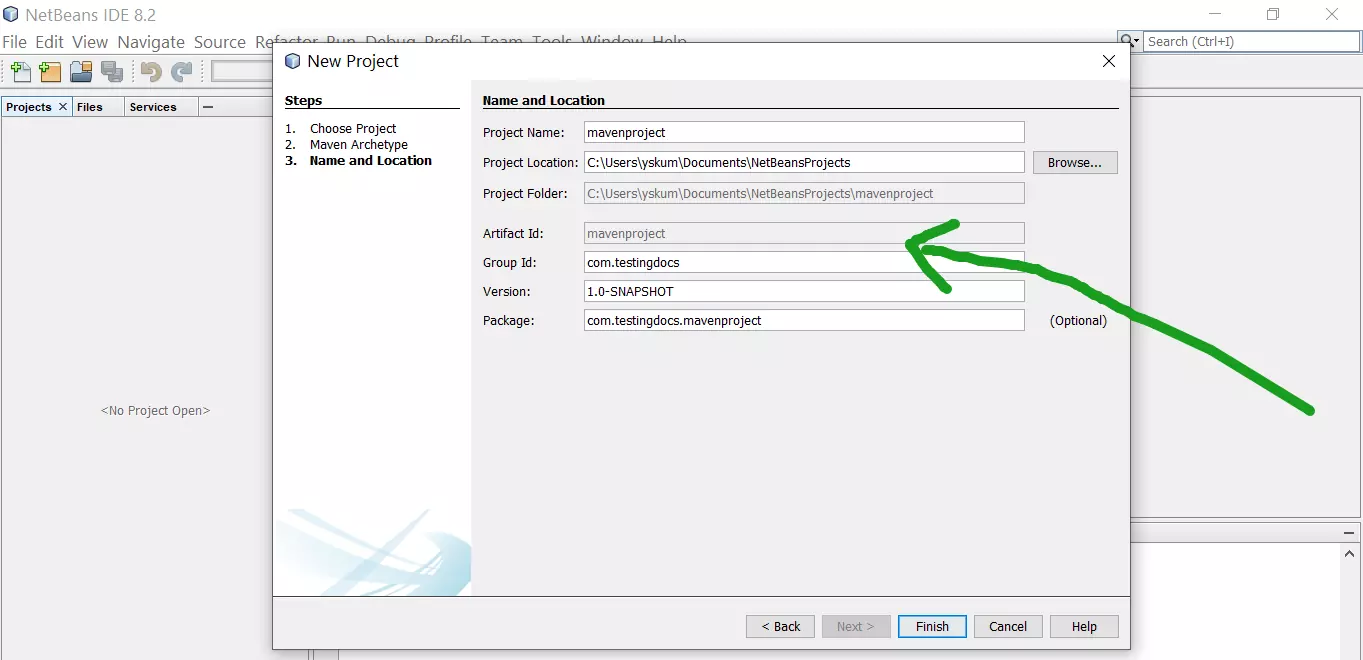
Click on the Finish button to create the maven project.
maven-archetype-quickstart is an archetype that creates a sample Maven project.
The following files would be created and all supporting dependencies would be downloaded for you.
Project Structure
project
|– Source Packages
— $package
— App.java
|– Test Packages
— $package
— AppTest.java
|– pom.xml
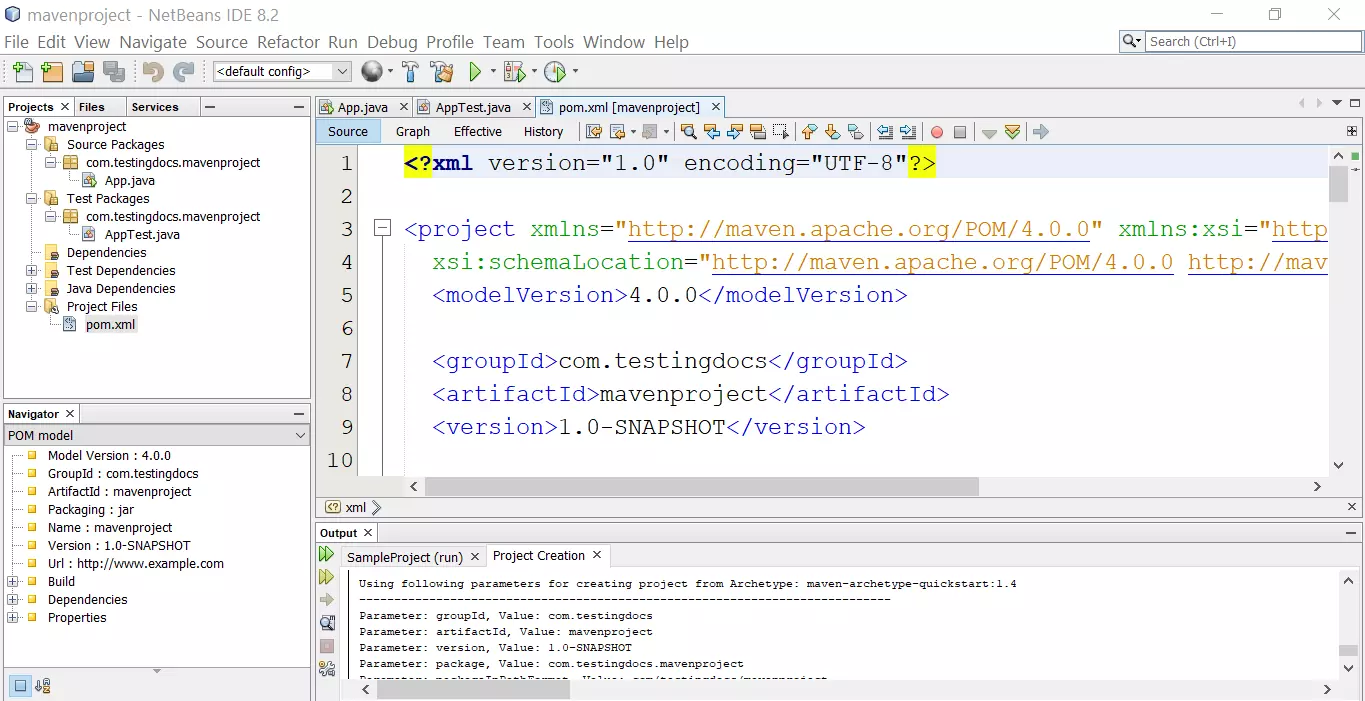
Pom.xml
<?xml version="1.0" encoding="UTF-8"?> <project xmlns="http://maven.apache.org/POM/4.0.0"
xmlns:xsi="http://www.w3.org/2001/XMLSchema-instance" xsi:schemaLocation="http://maven.apache.org/POM/4.0.0
http://maven.apache.org/xsd/maven-4.0.0.xsd"> <modelVersion>4.0.0</modelVersion> <groupId>com.testingdocs</groupId> <artifactId>mavenproject</artifactId> <version>1.0-SNAPSHOT</version> <name>mavenproject</name> <!-- FIXME change it to the project's website --> <url>http://www.example.com</url> <properties> <project.build.sourceEncoding>UTF-8
</project.build.sourceEncoding> <maven.compiler.source>1.7</maven.compiler.source> <maven.compiler.target>1.7</maven.compiler.target> </properties> <dependencies> <dependency> <groupId>junit</groupId> <artifactId>junit</artifactId> <version>4.11</version> <scope>test</scope> </dependency> </dependencies> <build> <pluginManagement>
<!-- lock down plugins versions to avoid using Maven defaults
(may be moved to parent pom) --> <plugins> <!-- clean lifecycle, see
https://maven.apache.org/ref/current/maven-core/lifecycles.html
#clean_Lifecycle --> <plugin> <artifactId>maven-clean-plugin</artifactId> <version>3.1.0</version> </plugin> <!-- default lifecycle,
jar packaging: see https://maven.apache.org/ref/current/
maven-core/default-bindings.html#Plugin_bindings_for_jar_packaging
--> <plugin> <artifactId>maven-resources-plugin</artifactId> <version>3.0.2</version> </plugin> <plugin> <artifactId>maven-compiler-plugin</artifactId> <version>3.8.0</version> </plugin> <plugin> <artifactId>maven-surefire-plugin</artifactId> <version>2.22.1</version> </plugin> <plugin> <artifactId>maven-jar-plugin</artifactId> <version>3.0.2</version> </plugin> <plugin> <artifactId>maven-install-plugin</artifactId> <version>2.5.2</version> </plugin> <plugin> <artifactId>maven-deploy-plugin</artifactId> <version>2.8.2</version> </plugin> <!-- site lifecycle,
see https://maven.apache.org/ref/current/maven-core/lifecycles.html
#site_Lifecycle --> <plugin> <artifactId>maven-site-plugin</artifactId> <version>3.7.1</version> </plugin> <plugin> <artifactId>maven-project-info-reports-plugin</artifactId> <version>3.0.0</version> </plugin> </plugins> </pluginManagement> </build> </project>
App.java
package com.testingdocs.mavenproject;
/**
* Hello world!
*
*/
public class App
{
public static void main( String[] args )
{
System.out.println( "Hello World!" );
}
}
AppTest.java
package com.testingdocs.mavenproject;
import static org.junit.Assert.assertTrue;
import org.junit.Test;
/**
* Unit test for simple App.
*/
public class AppTest
{
/**
* Rigorous Test :-)
*/
@Test
public void shouldAnswerWithTrue()
{
assertTrue( true );
}
}
—
Maven Tutorial
Maven tutorial on this website:
https://www.testingdocs.com/apache-maven-tutorial/






